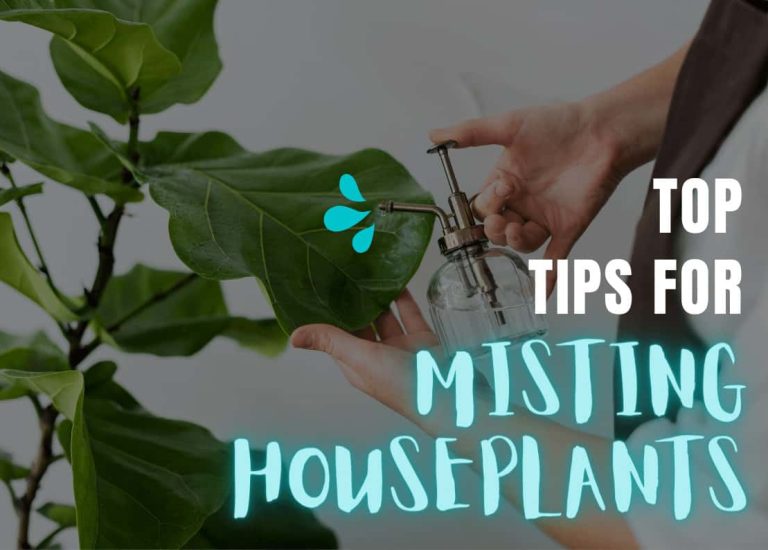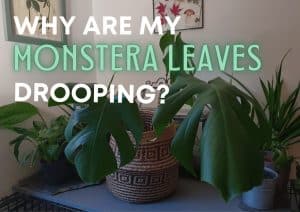Top Tips For Misting Your Indoor Plants
-
Chris Dosser
- July 18, 2022
If you buy something using the retail links in our articles, sometimes we earn a small affiliate commission. This does not impact the products we recommend.
Misting is an effective process that boosts the humidity of air surrounding your plant using a simple sprayer. It avoids putting your plant at risk of overwatering and encourages good habits like inspecting the health of your plant’s foliage.
This article will attempt to cover all the bases involved with misting, particularly dealing with how often you should plan to mist your plants and what factors influence the optimal misting frequency.
If you want to a more passive, hands off approach to raising humidity surrounding your plants, you could opt for a pebble tray instead.

Why mist instead of regular watering?
Where moisture is primarily absorbed by a plant through its root system, the logic behind misting is that it helps to increase the humidity levels of the atmosphere surrounding the foliage.
This slows down the plants’ tendency to lose water through their leaves and where spray lands at the base of the plant helps to oxygenate soil.
It also helps to wash away dirt and dust off your leaves, along with any insects, pests or fungal spores.
How often should you mist houseplants?
Morphological and environmental factors other than simply the amount of humidity presently in the air that helps dictate just how often you should be misting.
If your plant has thinner leaves for example, there is a good chance it will benefit from an extra little humidity.
Tropical plants and plants that are naturally sheltered by canopies will definitely appreciate a good misting. Think ferns, rubber plants, philodendrons, anthuriums, caladiums, orchids, aloe vera, spider plants, and bromeliads.
While most people swear that misting helps the plant thrive and flourish, others believe that it is of little benefit and is unsustainable in the long run as once the moisture wears off, your plant will continue to lose water through its leaves as usual.
The latter camp also argue that misting increases the chance of giving it too much water and potentially inducing rot.
So when do you mist a plant and when should you refrain from misting?
This completely depends on the plant in question, along with other deciding factors such as the amount of moisture and humidity present in the surrounding environment in which it is kept.
If you keep it in a small room, like your shower room, there is more chance that it will be exposed to high humidity and moisture, negating the need for misting. In a large, drafty and open room, plants might need a little help obtaining a drink.
On an average start by misting your plant twice a week, and reduce the frequency if they begin to look a little washed out.
Alternatives to misting your houseplants
An alternative to misting is to create a naturally humid environment.
You can achieve this by grouping plants that require more moisture together in a little huddle. This will let the plants create humidity for one another. Just remember to leave enough room for a little air to circulate.
Keeping your plants in a small, humid room—your bathroom for example, will also gently mist them. If you like to have clean, dust free foliage keeping them in your bathroom also means extra convenience when it comes to showering them.
You can also take advantage of the moisture trapped in the soil and construct a tent with a clear plastic bag placed over a recently watered plant.
Cover all parts of the plant with the bag and bring the edges down to below the rim of the pot. Make sure you secure the ends- either use a rubber band or tie a length of twine to keep it firmly in place.
Make sure you cut little air slits or tiny holes to allow the excess moisture to escape and also to allow air to circulate. This way you are virtually creating a mini-greenhouse for your plant.
Before you go…
Here are the most useful tips to keep in mind and help with your future misting:
- Use water that is tepid, lukewarm or at room temperature. Water that is scolding hot or ice cold could do more harm than good.
- Spray both the top of, as well as the underside of the leaf when misting. It needs to look dewy, not droopy with water.
- Misting plants in the morning will allow the plants to retain humidity for longer, while allowing the plant to dry out by night.

Chris Dosser
Co-Founder of Eden Indoors
Chris is a self-taught horticulturist with over a decade of experience caring for houseplants and creating lush, thriving indoor oases. He specializes in Monstera, and by self admission has a serious problem with buying and propagating rare indoor plants!
Similar Posts
Why Are The Leaves Falling Off My Monstera Plant? (Incl. Fixes)
Are the leaves on your Monstera plant looking a bit droopy? Chances are it's nothing serious but to get your plant back to full health you need to act now!
Distilled Water For Houseplants: The Good, The Bad, And The Ugly
It's a little known fact that tap water can be bad for houseplants. So is distilled water a good replacement, or are there better options for thirsty plants?



